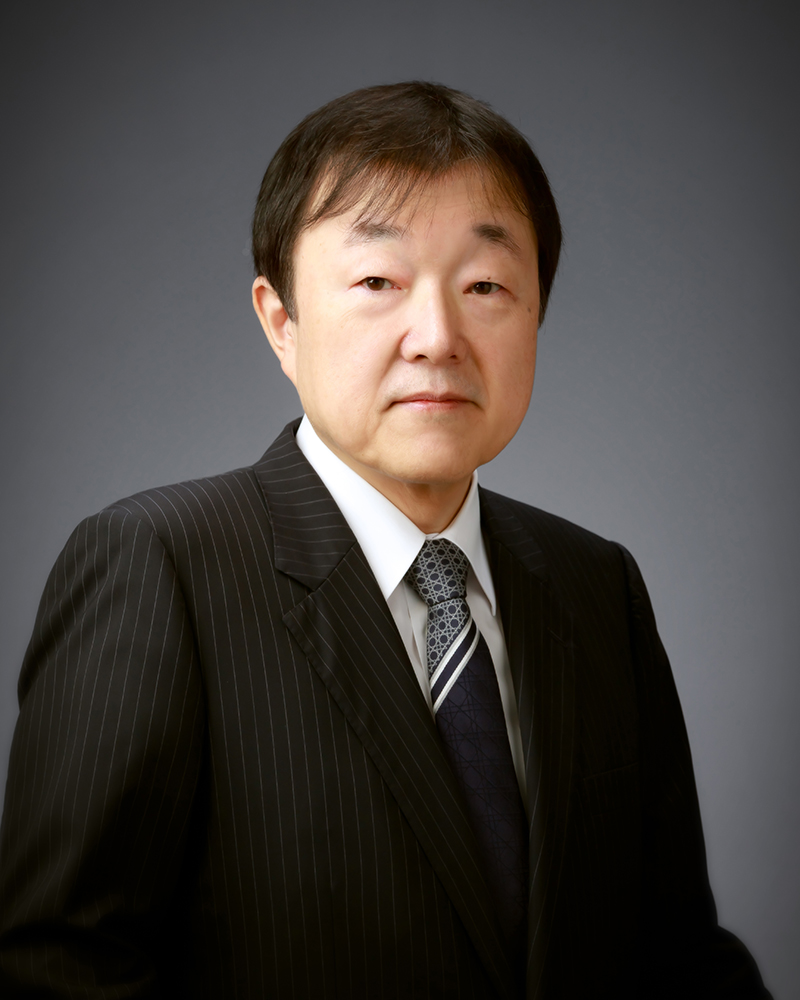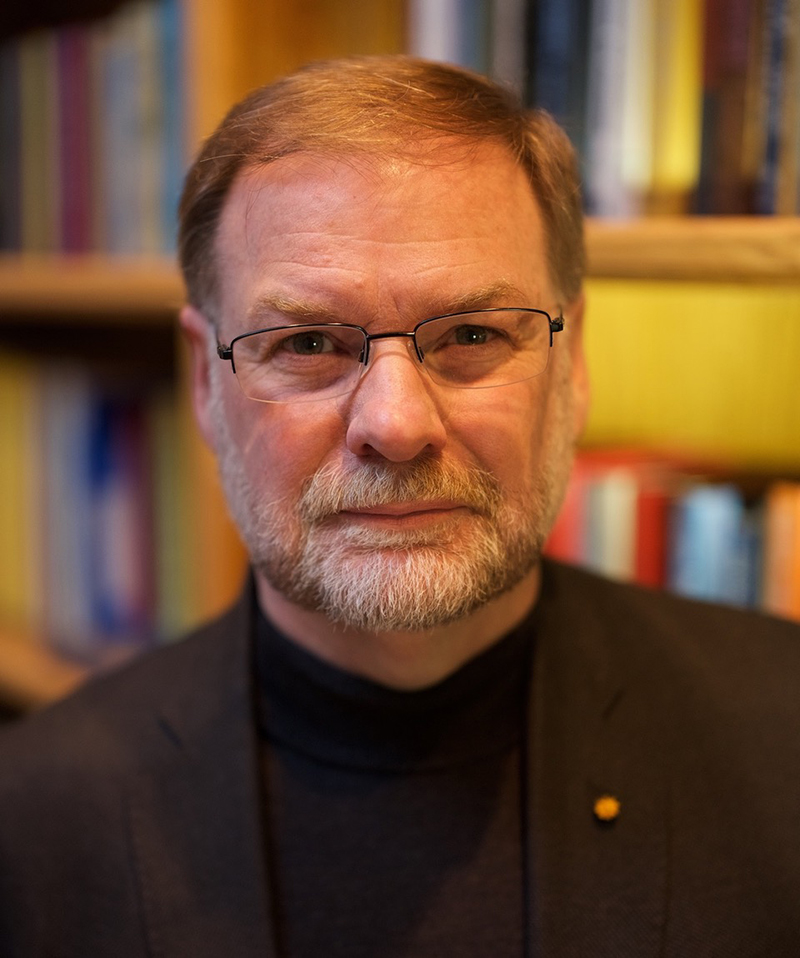Heike Riel
IBM Fellow, Department Head Science & Technology, IBM Research Europe – Zurich, Switzerland
Nanostructures and nanodevices toward quantum technology applications
16:15-17:05

Heike Riel
IBM Fellow, Department Head Science & Technology, IBM Research Europe – Zurich, Switzerland
Nanostructures and nanodevices toward quantum technology applications
16:15-17:05

Susumu Noda
Institute for Advanced Study, Kyoto University (KUIAS), Japan
Progress of Photonic Crystals: from Fundamentals to Social Implementation
17:05-17:55
Light plays an extremely important role in various fields such as measurement, manufacturing, lighting, telecommunication, and medicine. Over the past 37 years, we have conducted research on artificial optical nanostructures called “photonic crystals” and have endeavored in the formation of various concepts for controlling light to the ultimate degree. First, we realized an ideal “three-dimensional photonic crystal” that can prohibit the propagation of light with certain wavelengths in all three spatial directions [1]. By suitably incorporating light-emitting elements and/or artificial defects into the structure, we demonstrated the suppression and/or enhancement of spontaneous light emission, as well as three-dimensional control of light propagation [2,3]. Subsequently, we created a concept for light control using “two-dimensional photonic crystals,” who rival their three-dimensional cousins in spite of having periodicity in one fewer dimension [4-6]. Here, we first demonstrated that by forming a twodimensional crystal in an extremely thin layer of semiconductor material suspended in air and inserting artificial defects into this crystal in the form of lines or points, various functionalities such as waveguiding, light capture, and light emission can be achieved [4]. Next, by adjusting the positions and sizes of lattice points in the vicinity of an artificial point-defect resonant cavity, we demonstrated that the duration over which light is confined to the cavity can be dramatically extended, or, in other words, that it is possible to form a nanocavity with an extremely high Q value [5,6]. Such lightconfinement concepts have become widely utilized in the design and fabrication of structures in basic optical sciences, such as cavity quantum electrodynamics, quantum optics, nanolasers, and even topological photonics.
We also discovered that it is possible to realize coherent lasing oscillation over a large area using a singularity point (e.g. Γ) of two-dimensional photonic crystal, leading to the invention of so-called photonic-crystal surface-emitting lasers (PCSELs) [7-12]. Typically, to increase the output power of a semiconductor laser, it is necessary to increase the size of its emission area. However, this leads to the onset of multi-mode operation, which significantly deteriorates the beam quality and is a major bottleneck to use. By embedding a two-dimensional photonic crystal into a semiconductor laser and utilizing a singularity point of the photonic band structure, we demonstrated that oscillation in a single fundamental mode can be stabilized, enabling single-mode operation even over extremely large areas [7,8]. In particular, by using a unique structure called a “double-lattice photonic crystal” [9], where two photonic crystals are overlapped with a quarter-period offset, we achieved continuous operation of a large-area PCSEL with a diameter of 3 mm, successfully creating the first-ever 50-watt-class single-mode semiconductor laser [10,11]. We also have theoretically demonstrated that continuous, single-mode operation at an output power of 500~1000 watts could be possible even with a 10-mmdiameter device [12], and currently we are on the verge of demonstrating its operational feasibility.
Owing to their ability to emit high-quality beams at high output powers while also suppressing beam spreading due to diffraction, PCSELs have been shown to be applicable to lens-free, highresolution light detection and ranging (LiDAR) systems, and they are expected to contribute significantly to the advancement of autonomous driving systems [13,14]. Furthermore, the development of a new, so-called “modulated photonic crystal,” in which both the sizes and the positions of lattice points are adjusted, has enabled electrical two-dimensional beam scanning and even the generation of beams of arbitrary shapes [13,15]. In these and other ways, PCSELs are expected to outperform other high-power lasers, such as CO2 lasers and fiber lasers, and are anticipated to contribute to the realization of a super smart society through their applications in various field such as measurement, manufacturing, lighting, telecommunications, and medicine.
Against the above backdrop, in 2020, the Center of Excellence for Photonic-crystal Surfaceemitting Lasers (PCSEL-COE) was established at Kyoto University to accelerate the social implementation of PCSELs, and in 2024, the PCSEL Research Center, a general incorporated association, was established as an independent entity from the University. To date, the PCSEL-COE and the general incorporated association have received over 150 inquiries from interested parties, and efforts to provide PCSEL samples and to transfer technology to these parties are ongoing. In this OPIC plenary talk, I will present the progress of research on photonic crystals over the past 37 years, from their fundamentals to their social implementation [16].
References: [1] S. Noda, et al., Science, 293, 1123 (2001). [2] S. Ogawa, et al., Science, 305, 227 (2004). [3] K. Ishizaki, et al., Nature Photonics, 7, 133 (2013). [4] S. Noda, et al., Nature, 407, 608 (2000). [5] Y. Akahane, et al., Nature, 425, 944 (2003). [6] B. S. Song, et al., Nature Materials, 4, 207 (2005). [7] M. Imada, et al., Appl. Phys. Lett, 75, 316 (1999). [8] S. Noda, et al, Advances in Optics and Photonics, 15, 977 (2023) (Tutorial paper). [9] M. Yoshida, et al., Nature Materials, 18, 121 (2019). [10] M. Yoshida, et al., Nature, 618, 727 (2023). [11] S. Noda, et al, IEEE Spectrum, May Issue, (2024). [12] T. Inoue, et al., Nature Communications, 13, 3262 (2022). [13] S. Noda, et al, Nature Reviews Electrical Engineering, 1, 802 (2024) (Review paper). [14] M. Yoshida, Journal of Physics: Photonics, 3, 022006 (2021). [15] R. Sakata, et al., Nature Communications, 11, 3487 (2020). [16] https://qoe.kuias.kyoto-u.ac.jp/Professor_Noda-s_Final_Lecture.mp4
Prof. Susumu Noda received the B.S., M.S., and Ph.D. degrees from Kyoto University, Kyoto, Japan, in 1982, 1984, and 1991, respectively, all in electronics, and the Honorary degree from Gent University, Belgium, in 2006. From 1984 to 1988, he was with the Mitsubishi Electric Corporation, and joined Kyoto University in 1988. He became a full professor of Kyoto University in 2000. Currently, he is a Distinguished Professor at Institute for Advanced Study, Kyoto University (KUIAS). He is also serving as the Representative Director of the Photonic-Crystal Laser Research Center, a general incorporated association. He received various awards, including the IBM Science Award (2000), Optical Society of America Joseph Fraunhofer Award/Robert M. Burley Prize (2006), IEEE Fellow (2008), Medal with Purple Ribbon (2014), the Japan Society of Applied Physics Outstanding Achievement Award (2015), Fellow of the Laser Socity of Japan (2017), MOC (Microoptic Conference) Award (2019), and the Japan Academy Prise (2022). More details can be seen in the web site: https://kuias.kyoto-u.ac.jp/e/profile/noda/

Chris Barty
University of California, Irvine and Lumitron Technologies, Inc., USA
Finding and Treating Cancer in an Instant: The Promise of Distributed Charge Compton Sources
17:55-18:45
For nearly 130 years, clinical x-ray systems have relied on the Roentgen x-ray tube, which generates photons through the stochastic bombardment of a solid target with energetic electrons. These conventional sources emit a broad x-ray spectrum in all directions from an emission area typically 500 µm or larger. Clinical therapy systems, meanwhile, have depended on MeV-class x-rays and, more recently, 100 MeV-class protons to reach deep-seated tumors with treatments lasting tens of minutes.
Laser-Compton sources, by contrast, generate x-rays through the interaction of high-intensity laser pulses with highly relativistic electrons. They can produce low-divergence beams of nearly monoenergetic x-rays or gamma rays from interaction regions only a few microns across, and the underlying electron beam systems of Compton sources can be energetic enough for therapeutic applications.
This presentation reviews a novel Distributed Charge Compton Source (DCCS) architecture, designed to optimize x-ray performance. The system produces precision x-ray beams capable of imaging at up to 100× higher resolution than currently possible in clinical settings, as well as very high energy electron (VHEE) beams that can reach and treat cancer anywhere in the human body within fractions of a second.
At the core of the DCCS is an advanced laser pulse synthesis technology that employs the x-band (11.424 GHz) RF clock of a compact, high-gradient accelerator. Using telecom-grade amplitude and phase modulators, it generates a high-repetition laser with a macro/micro pulse structure of up to 1000 micro-pulses, repeated at a macro-pulse rate of up to 400 Hz. This approach enhances electron beam emittance, maximizes current, reduces x-ray bandwidth, inherently synchronizes the laser and electron subsystems, and maximizes average x-ray brilliance. At MeV energies, DCCS systems can achieve average brilliance exceeding that of the world’s largest synchrotrons by more than 15 orders of magnitude.
The technical development of a clinical prototype DCCS system in Irvine, California (Fig. 1) will be discussed.
This system has demonstrated:
• Record x-ray flux above 100 keV
• Record image resolution above 100 keV
• Record low bandwidth for a Compton source
• Rapid precision tuning across x-ray energies
• Element-selective imaging within complex materials
These capabilities open unprecedented opportunities for precision clinical radiography, enabling disease imaging at more than 100× higher spatial resolution or at up to 100× lower patient dose compared with conventional x-ray tubes.
The system’s compact, high-energy accelerator also generates VHEE beams suitable for FLASH (ultrahigh dose rate) radiotherapy, which has been shown in numerous studies to spare healthy tissue while effectively targeting tumors. FLASH therapy delivers radiation doses several orders of magnitude faster than conventional methods, reducing treatment times from minutes to milliseconds and dramatically minimizing damage to surrounding normal tissue while maintaining tumor control.
Because the VHEE and laser-Compton x-ray beams are naturally collinear, the DCCS architecture provides a unique platform for true precision, image-guided radiotherapy. The presentation will outline potential implementations of this approach [1] and share recent results from clinically relevant cancer imaging and therapy studies conducted using the Irvine hardware.

References
[1] C P J Barty et al., Design, construction, and test of compact, distributed-charge, X-band accelerator systems that enable image-guided, VHEE FLASH radiotherapy, 2025 Frontiers in Physics,
DOI=10.3389/fphy.2024.1472759
Dr. Christopher (Chris) P. J. Barty is a Distinguished Professor of Physics and Astronomy at the University of California, Irvine (https://faculty.sites.uci.edu/bartylab/) and the co-founder, executive director, and chief technology officer of Lumitron Technologies, Inc of Irvine, California (www.lumitronxrays.com). At UCI he has affiliations with the Beckman Laser Institute and Medical Clinic, the Chao Family Comprehensive Cancer Center, and is the senior member of UCI’s Convergence Optical Sciences Initiative (COSI). Dr. Barty is the past chair of the International Committee on Ultrahigh Intensity Lasers (www.ICUIL.org). Prior to his arrival in Southern California in 2017, he had served as the chief technology officer for the $0.5B/annum, National Ignition Facility and Photon Science Directorate at the Lawrence Livermore National Laboratory. Dr. Barty received his Ph.D. and M.S. degrees in applied physics from Stanford University and B.S. degrees in chemistry, physics and chemical engineering, each with honors, from North Carolina State University. He is a fellow of; the Optical Society of America (OSA – now Optica), the Society for Photo-optical Instrumentation Engineers (SPIE), the American Physical Society (APS), the Institute of Electrical and Electronics Engineers (IEEE) and the American Association for the Advancement of Science (AAAS). Recent recognitions include; the 2013 Distinguished Lectureship of the IEEE Lasers and Electro-Optics Society, the 2016 Harold E. Edgerton Award of the SPIE for novel contributions to the advancement of ultrafast lasers and laser-based x-ray and gamma-ray science and the 2018 R. W. Wood Prize of the OSA for foundational innovations that have enabled ultrafast and energetic intense lasers around the world. He has published over 250 manuscripts and spoken widely on topics spanning lasers, optics, materials science, nuclear science, medicine, chemistry, engineering and physics. Dr. Barty’s present research efforts aim to enable transformational x-ray and very high energy electron beam systems that enable precision detection and treatment of disease, novel x-ray studies of ultrafast material dynamics, and the emergence of nuclear photonics as new scientific discipline.